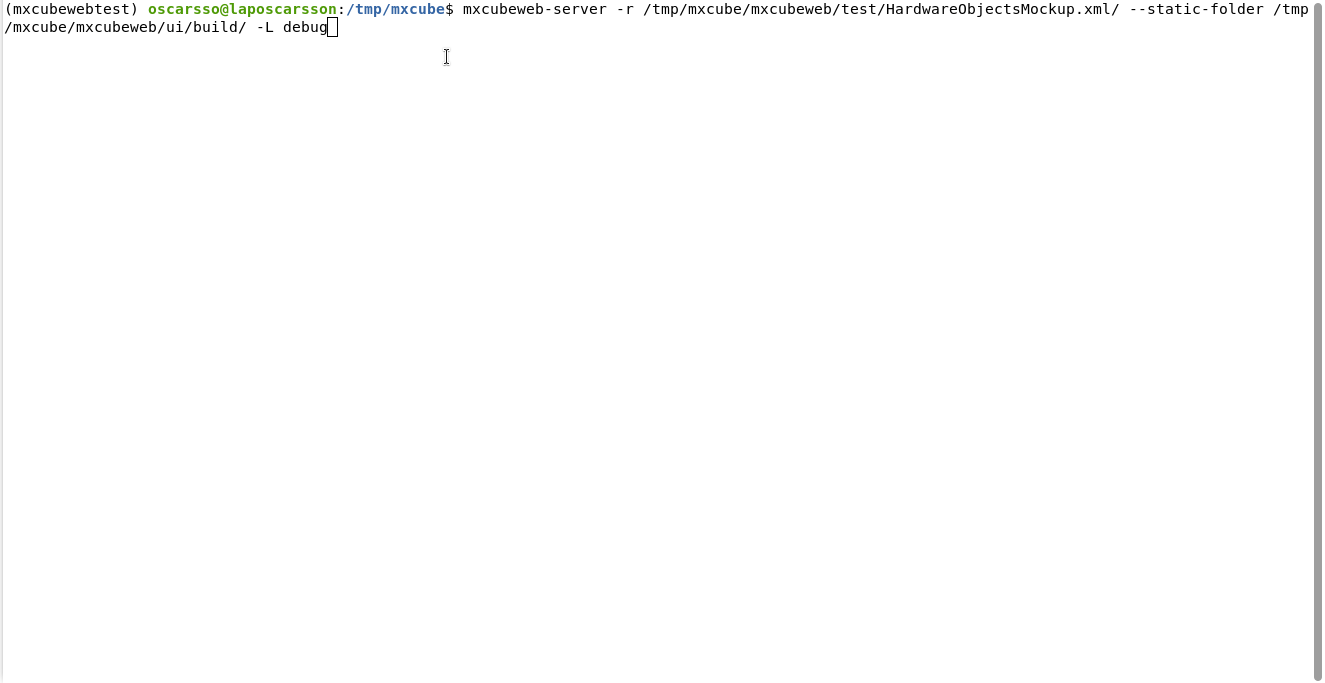Installing a development environment#
MXCuBE-Web is the latest generation of the data acquisition software MXCuBE. It is developed as a web application and runs in any recent browser. The application is built using standard web technologies and does not require any third-party plugins to be installed in order to function. Being a web application, it is naturally divided into server and client parts. The communication between the client and server are made using HTTP/HTTPS and web-sockets. It is strongly recommended to use HTTPS, SSL/TLS encrypted HTTP. The traffic passes through the conventional HTTP/HTTPS ports, minimizing the need for special firewall or proxy settings to get the application to work.

HardwareRepository and mxcubecore#
The underlying beamline control layer
is implemented using the library mxcubecore
previously known as HardwareRepository.
The mxcubecore library is compatible with
both the MXCuBE-WEB and the MXCuBE-Qt applications.
Install with conda#
We recommend using conda to create an isolated environment. Conda can be downloaded here.
1. Create a mxcube folder that will contain both mxcubeweb and mxcubecore#
mkdir mxcube
cd mxcube
2. Clone mxcubeweb and mxcubecore#
git clone https://github.com/mxcube/mxcubeweb.git
git clone https://github.com/mxcube/mxcubecore.git
3. Create the mxcubeweb conda environment#
Create the mxcubeweb conda environment using the conda-environment.yml file in mxcubeweb.
The installation of the dependencies in the environment takes a few minutes.
The name of the environment is located at the top of the file conda-environment.yml.
It can be changed on the command line with --name <env-name>.
cd mxcubeweb
conda env create --file conda-environment.yml
# or (to pass a different name)
conda env create --file conda-environment.yml --name another_name
To switch to a specific Python version inside the conda environment, one can additionally use a command such as the following after environment creation, for example for Python 3.9:
conda install --name mxcubeweb 'python=3.9'
4. Activate the environment#
conda activate mxcubeweb
5. Install the back-end dependencies#
poetry install
6. Install the front-end dependencies and build the UI#
pnpm --prefix ui install
pnpm --prefix ui build
7. Running the application (server)#
# The paths passed below need to be the absolute paths
# to the demo and build directories
# (that is why there is an extra `$(pwd)` in the command).
mxcubeweb-server -r $(pwd)/mxcubeweb/demo/ --static-folder $(pwd)/mxcubeweb/ui/build/ -L debug
Running the above should give something similar to

8. Running the MXCuBE-WEB front-end#
All that is needed to run the application is to start the server and point your browser to http://localhost:8081, which will serve the prebuilt client (if any).
The test username is idtest0 and the password can be any string
(except wrong and ispybDown, those are used to emulate different behaviours),
you can use test as a password for example:

The client is not built if nothing appears, or you get a “404 page not found” error when browsing http://localhost:8081. Follow the instructions in 6. Install the front-end dependencies and build the UI to build a client.
9. Installing MXCUBE-WEB for development#
Please read the contributing guidelines before getting started with the development.
It is recommended to install mxcubeweb and mxcubecore as “editable”
to be able to add breakpoints and debug the application more easily.
By default, when running poetry install,
Poetry installs the main project (here mxcubeweb) as editable,
but not the dependencies (which includes mxcubecore).
Installing mxcubecore as editable can be done with pip.
# Make sure the conda environment is active
conda activate mxcubeweb
# In the project root of mxcubecore (note that the dot `.` is important):
python -m pip install --editable .
The “editable” installations make it possible to add break points directly in the “checked out code”.
9.1. Running tests#
The tests are located in the test folder and are executed with pytest
# Run pytest In the root of the mxcubeweb directory
cd mxcubeweb
pytest
The output should look something like the following:

9.2. Running the front-end development server#
The front-end development server, listens for changes on the filesystem and builds (re-builds) the UI when a change is made. This makes it very easy and fast to see how a change affects the UI and makes debugging much easier. The development server listens on port 5173
# The front-end needs the backend to run,
# so before starting the development server, open a new terminal and run (as in step 7):
conda activate mxcubeweb
mxcubeweb-server -r $(pwd)/mxcubeweb/demo/ --static-folder $(pwd)/mxcubeweb/ui/build/ --log-level debug
# In another terminal, from the root directory of `mxcubeweb`
pnpm --prefix ui start
The above will automatically open a browser with the URL: http://localhost:5173
Note: In case that you decided to install MXCuBE-Web without using the
conda-environment.ymlfile, the stream in theData Collectiontab of the UI might be missing. To resolve this:
Ensure that
ffmpegis properly installed on your side, to install runsudo apt install ffmpegThen restart the server.Alternatively, you can manually install the dependencies of MXCuBE’s video-streamer and restart the server afterwards.
If the issue persists, please make sure to use the issues page and reach out for help.
9.3. Running the end to end (e2e) tests#
Keep both the backend and front-end servers running then run the following command in a third terminal, from the root directory of the project:
pnpm --prefix ui e2e
The result should look like this:

9.4. Ready to develop#
Use your favourite editor to start working with the code. Read the contributing guidelines and check that linting tools are set up correctly. There are settings files for Visual Studio Code in the repository.